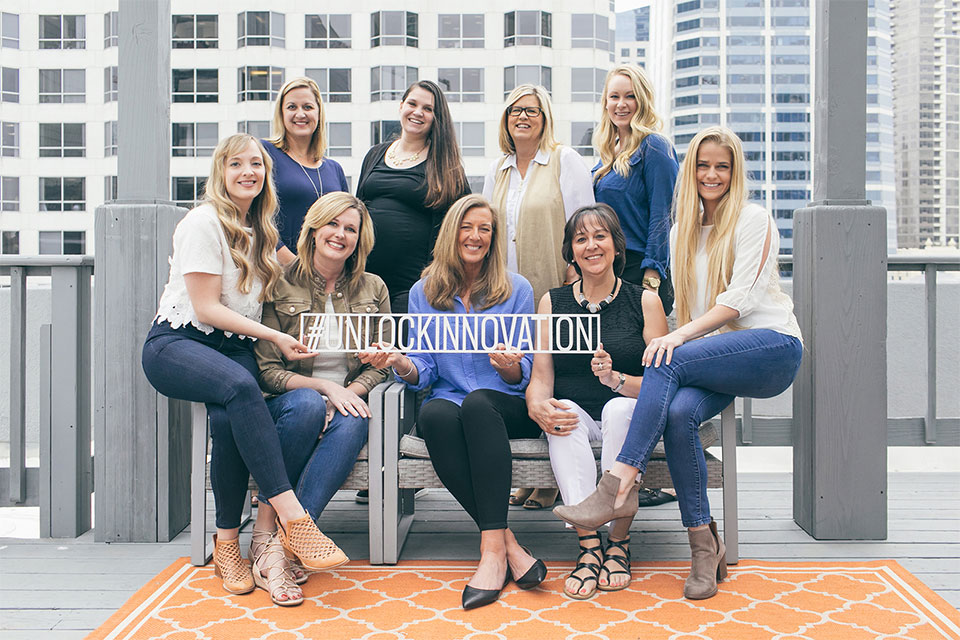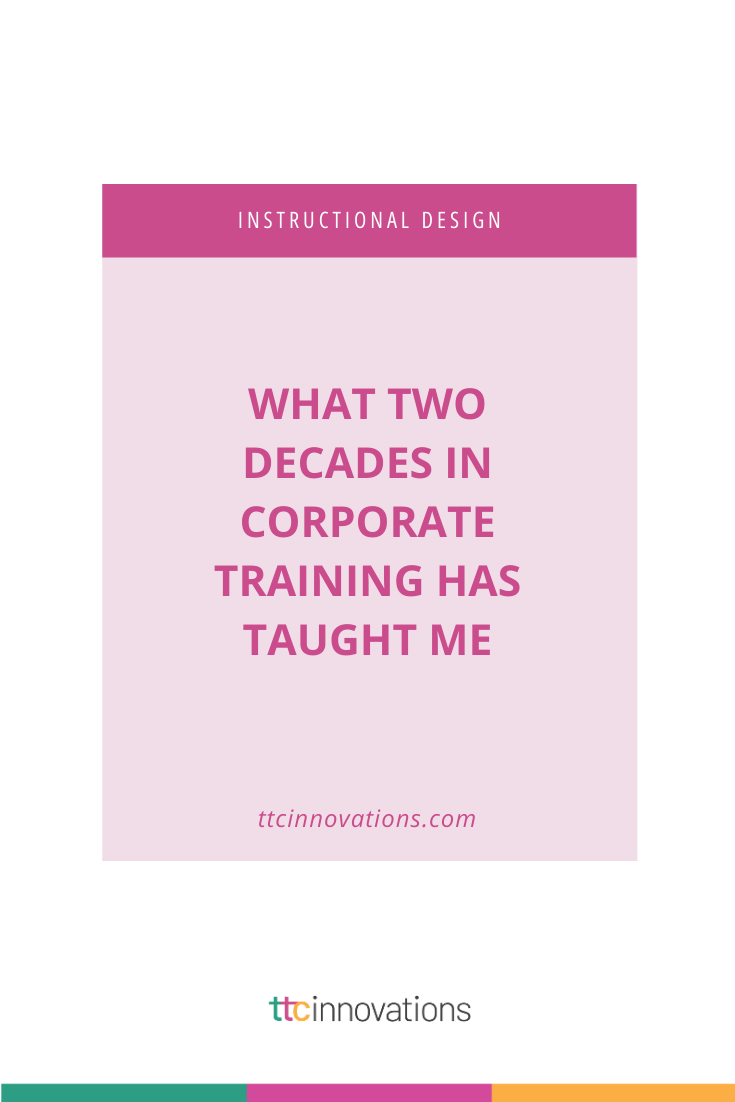Wow, I can’t believe this year marks two decades since I began my career as a corporate training professional that evolved into the role of an instructional designer (ID). I’ve had just about every title for corporate training under the sun, but the job description is usually the same. I’ve learned so much about conducting myself and inspiring others that it is my pleasure to share my nuggets of wisdom, so you can always come out on top.
1. Reach for the stars, hoping to land on the roof.
In other words, learn to get innovative with what you have because there is no guarantee that you will get all of the bells and whistles (not for lack of trying). You can beg and plead for the newest version of the Adobe suite, but the demands don’t pause while you await approval.
Build a business case
For any significant purchase, there is someone in the C-suite who must sign off for it. If that “C” ends with “FO,” you need to build your business case by speaking their language — numbers. They are looking for a return on investment (ROI) for this expense.
- Will it eliminate the need for another recurring cost or save money another way (hard dollars)?
- Will it save time for you or others (soft dollars)?
- Will it improve training participation, which leads to better job performance (quality and/or efficiency)?
Revamp existing content
Instead of doing a complete overhaul, focus on giving your existing learning programs a revamp!

On-Demand Webinar
Fall Back in Love by Revitalizing Old Content: How to give your training material a makeover learners will LOVE.
Make use of the “University of YouTube”
If you don’t have it in your budget to learn your new tool or gadget, look to YouTube for how-to videos. I’m not exaggerating the value — my husband and I built our cabin with lessons from YouTube!
2. Preparation trumps everything.
As a traveling facilitator, I have had so many plot twists! Preparation has been my saving grace. You must know your topic well enough to be able to improvise no matter what happens, with one arm tied behind your back.
I always have a few stories in my pocket that will help my audience relate to the new information I’m sharing. The more you know about the group ahead of time, the better you can weave a tale for them to help the training stick.
Have a great script or facilitator guide for the complete package. It prevents the temptation of reading slides, and PowerPoint® has adapted to show the script when presenting.
3. Hug your SME.
One question I hear from new IDs is how to manage a subject matter expert (SME)? I ward off any territorial angst in my first meeting with my secret recipe of “Val Sprinkles.” I tell them that I am here for only two things:
- To make their life easy
- To make them look fabulous
That’s all there is to it. From that point, they are happy to help me help THEM look fabulous! The final tip is to be respectful of their time along the way.
4. Prepare your leaders.
Get the team leaders in the loop so they can prepare the employees to learn. Coach them how to communicate the upcoming changes best so their team is ready. Share feedback at the end of training, and you’ll have allies for life.

#UnlockInnovation With Us
• Collaborative and supportive network
• Work with L&D industry influencers
• Access to professional development
• Flexible hours and virtual environment
5. Facilitate, watch & learn.
If you came out of school as an instructional designer and never taught a course, it’s long overdue. You can gain incredible insight watching reactions on the spot. This new wisdom can be applied going forward as you develop more courses.
6. Never say die.
To invite as much opportunity as possible, you want to be ambidextrous (capable of designing various soft skills and technical skills training). Each new adventure outside of your comfort zone increases confidence until nothing scares you. At ttcInnovations, we have the opportunity to work with a variety of clients, allowing us to pick up experience and knowledge on many industries and topics.
At the end of the day
My final piece of advice to training professionals — from the brand new to the seasoned ones like me — is never to convince yourself that you know everything you need to know. With each project, I learn something new, whether it be from a colleague or a SME. And with each project, I get a little better every time. I consider myself in a continuous state of improvement. The icing on the cake is that I get to sprinkle that improvement around to others.







